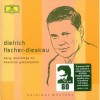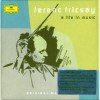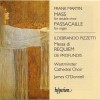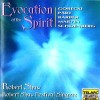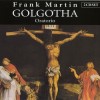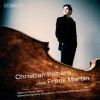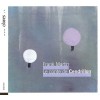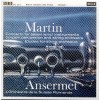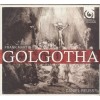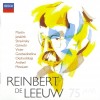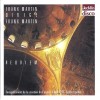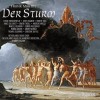| Country: | Switzerland, Netherlands |
| Period: | Neoclassicism, Modernism |
Biography
Frank Martin (15 September 1890 in the Eaux-Vives quarter of Geneva – 21 November 1974 in Naarden) was a Swiss composer, who lived a large part of his life in the Netherlands.
Born into a Huguenot family, youngest of the ten children of a Calvinist pastor named Charles Martin, Frank Martin was improvising at the piano even before he started school, and at the age of 9, despite having received no musical teaching, he wrote some complete songs. He attended a performance of Bach's St Matthew Passion when he was aged 12 and was deeply affected: Bach became his real mentor.
Respecting his parents' wishes, he studied Mathematics and Physics for two years at Geneva University, but all the time he was also working at his composition and studying the piano, composition and harmony with his first music teacher Joseph Lauber (1864 - 1953), a Geneva composer and by now a leading light of the city's musical scene. Later, in the 1920s, Martin would for a time work closely with Émile Jaques-Dalcroze from whom he learned much about rhythm and musical theory. Between 1918 and 1926 Martin lived successively in Zurich, Rome and Paris: compositions of the period show him searching for an authentic musical voice of his own.
The Petite Symphonie Concertante of 1944/45 (which made Martin's international reputation) is the best known of his orchestral works, as the early Mass is of his choral compositions and the Jedermann monologues (for baritone and piano or orchestra) of his works for solo voice. Other Martin pieces include a full-scale symphony (1936–1937), two piano concertos, a harpsichord concerto, a violin concerto, a cello concerto, a concerto for seven wind instruments, and a series of six one-movement works he called "ballades" for various solo instruments with piano or orchestra.
Among a dozen major scores for the theater are operatic settings of Shakespeare (Der Sturm [ The Tempest ], in August Wilhelm Schlegel's German version [1952 - 1955]) and Molière (Monsieur de Pourceaugnac [1960 - 1962]), and the satirical fairy tale La Nique à Satan (Thumbing Your Nose at Satan [1928 - 1931]). His works on sacred texts and subjects, which include another large-scale theater piece, Le Mystère de la Nativité (The Mystery of the Nativity [1957 / 1959]) are widely considered to rank among the finest religious compositions of the 20th century. Fellow Swiss musician Ernest Ansermet, a champion of his music from 1918 on, conducted recordings of many of Martin's works, such as the oratorio for soloists, double chorus & orchestra In Terra Pax, written in 1944, with the Orchestre de la Suisse Romande.[1]
Martin developed his mature style based on a very personal use of Arnold Schoenberg's twelve tone technique, having become interested in this around 1932, but did not abandon tonality. In fact his preference for lean textures and his habitual rhythmic vehemence are at the furthest possible remove from Schoenberg's hyperromanticism. Some of Martin's most inspired music comes from his eighties; he worked on his last cantata, Et la vie l'emporta, until ten days before his death. He died in Naarden, The Netherlands.







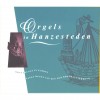
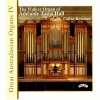
![Great European Organs. 05-James Lancelot [Durham Cathedral]](http://static.classicalm.com/repository/collection-cover/small/849-img1340530226510115.jpg)
![Great European Organs. 40-John Scott [St Giles' Cathedral Edinburgh]](http://static.classicalm.com/repository/collection-cover/small/919-img1341827119687358.jpg)
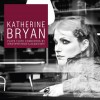
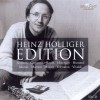
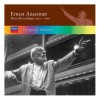
![Anthology of the Royal Concertgebouw Orchestra: Live the Radio Recordings 1960-1970 [CD3]](http://static.classicalm.com/repository/disk-cover/small/3440-img1395219111793077.jpg)
![Anthology of the Royal Concertgebouw Orchestra: Live the Radio Recordings 1960-1970 [CD8]](http://static.classicalm.com/repository/disk-cover/small/3445-img1395223501215523.jpg)
